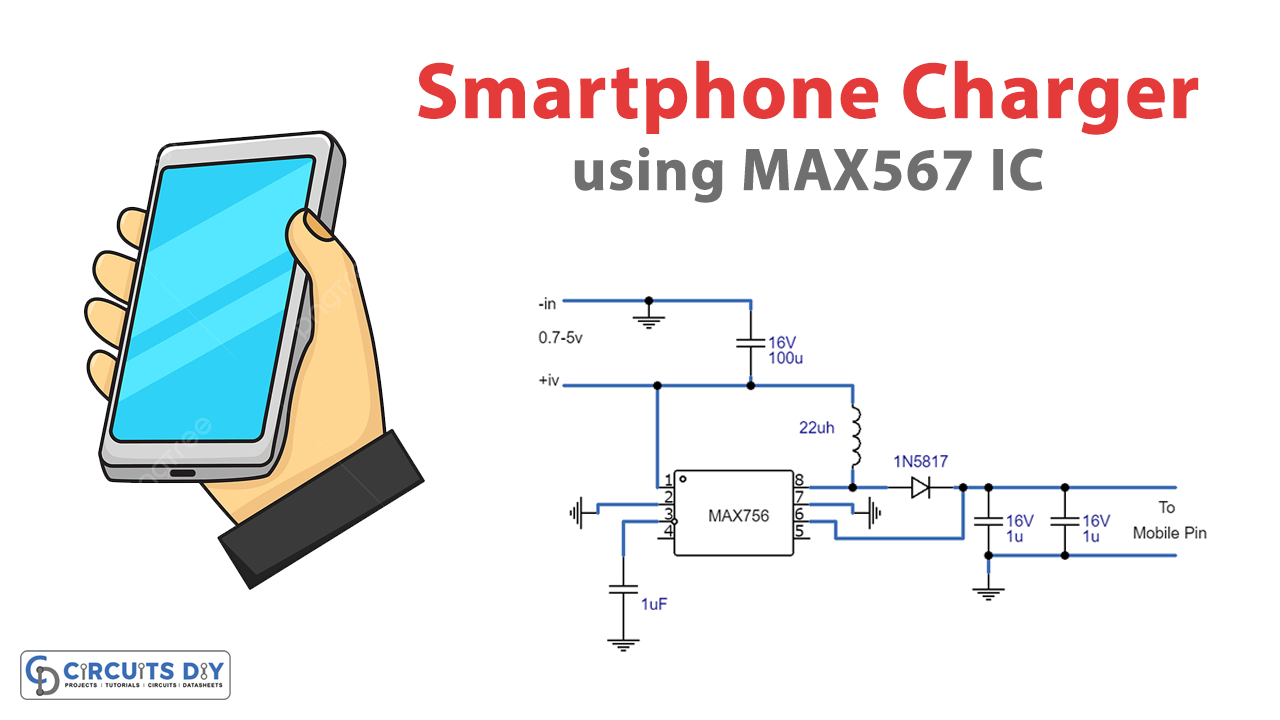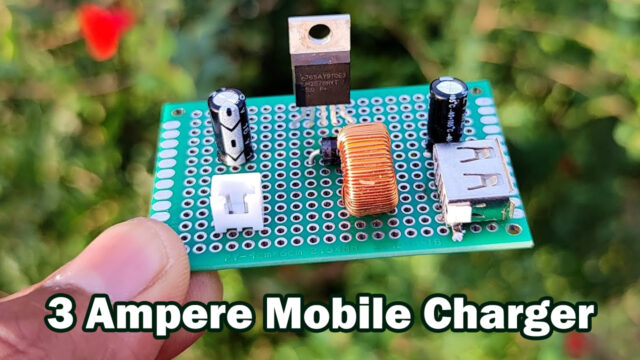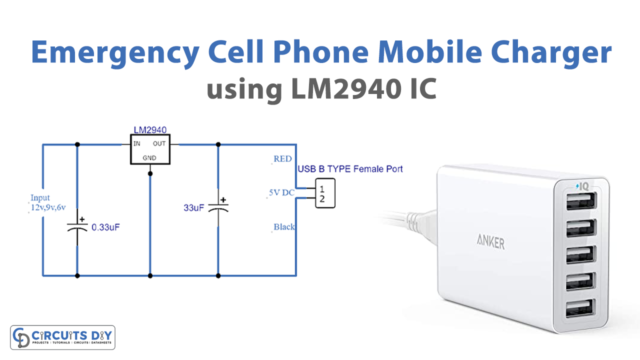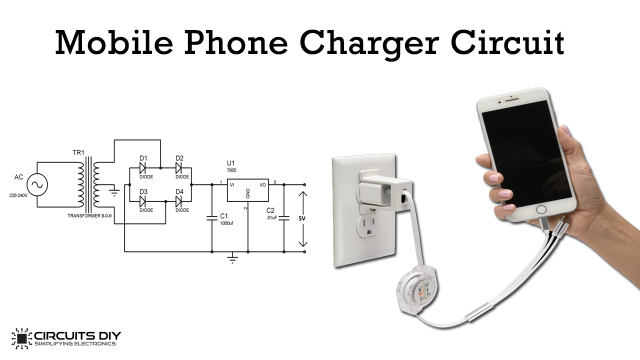Introduction
In a world where smartphones have become an essential part of our lives, having a low battery can cause a lot of inconvenience. We’ve all been there – frantically searching for a charger or a power outlet to keep our phones alive. But what if you’re in a situation where there’s no access to a power source? That’s where a simple smartphone charger circuit can come in handy.
In this article, we’ll explore how you can create a smartphone charger circuit using a boost converter circuit, which can help you charge your phone using just a few AA batteries or even a small solar panel. So, let’s dive in and learn how to make your own portable smartphone charger!
Hardware Required
| S.no | Components | Value | Qty |
|---|---|---|---|
| 1 | IC | MAX567 | 1 |
| 2 | Capacitor | 1, 16uF | 1, 1 |
| 3 | Polar Capacitor | 100uF | 2 |
| 4 | Inductor | 22uH | 1 |
| 5 | Diode | 1n5817 | 1 |
Circuit Diagram
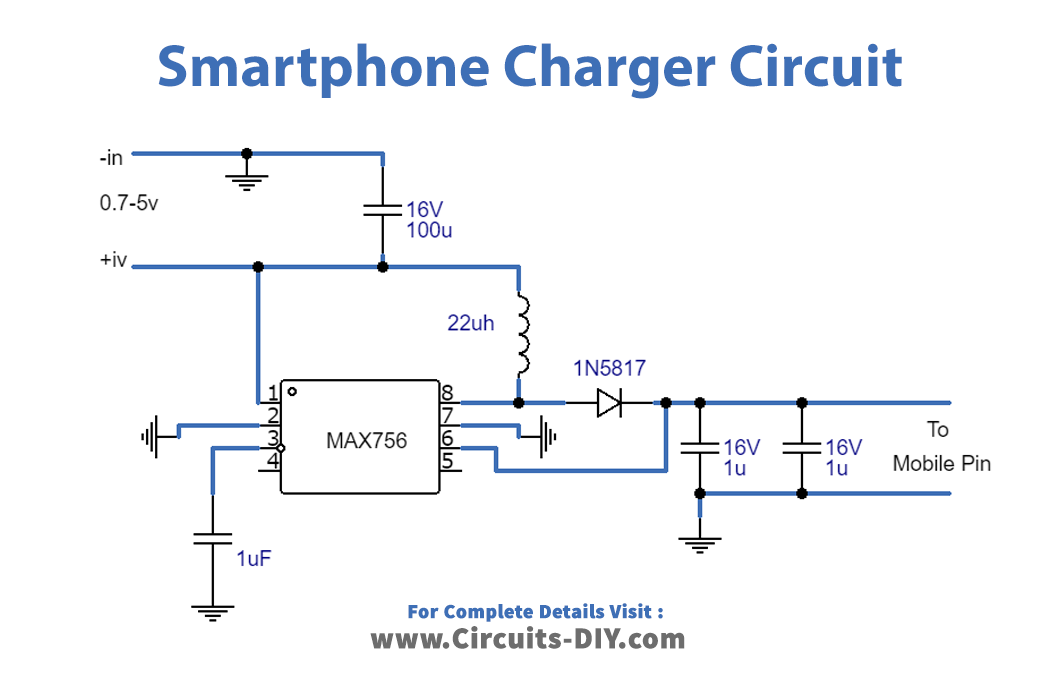
Circuit Explanation
This circuit is highly effective when used with low-voltage solar panels, as it can create a small battery charger or power a 5-volt device directly. It is also particularly useful for obtaining usable voltages from small DIY stepper motor wind turbines, which can be used to recharge batteries or power LED lights.
MAX756
The MAX756 is a Maxim integrated circuit that is the key component of the circuit discussed in this article. This little chip boosts input supply voltages as low as 0.7 volts into a 3.3-volt or 5-volt output with up to 87% efficiency. The maximum output current is 200 mA, which is adequate for a wide range of applications, including LED lighting. The low input voltage makes it possible to fully utilize the capacity of batteries.
Final Words
In conclusion, building a simple smartphone charger circuit is a rewarding and practical project that anyone can undertake. With just a few basic components and some basic electronics knowledge, you can create a functional charger that can keep your phone powered up and ready to go at all times. Whether you’re an electronics enthusiast looking for a new challenge or want to save money on a new charger, this project is worth trying out. So, gather your materials, roll up your sleeves, and get ready to build a charger that will keep your smartphone running smoothly for years to come!


